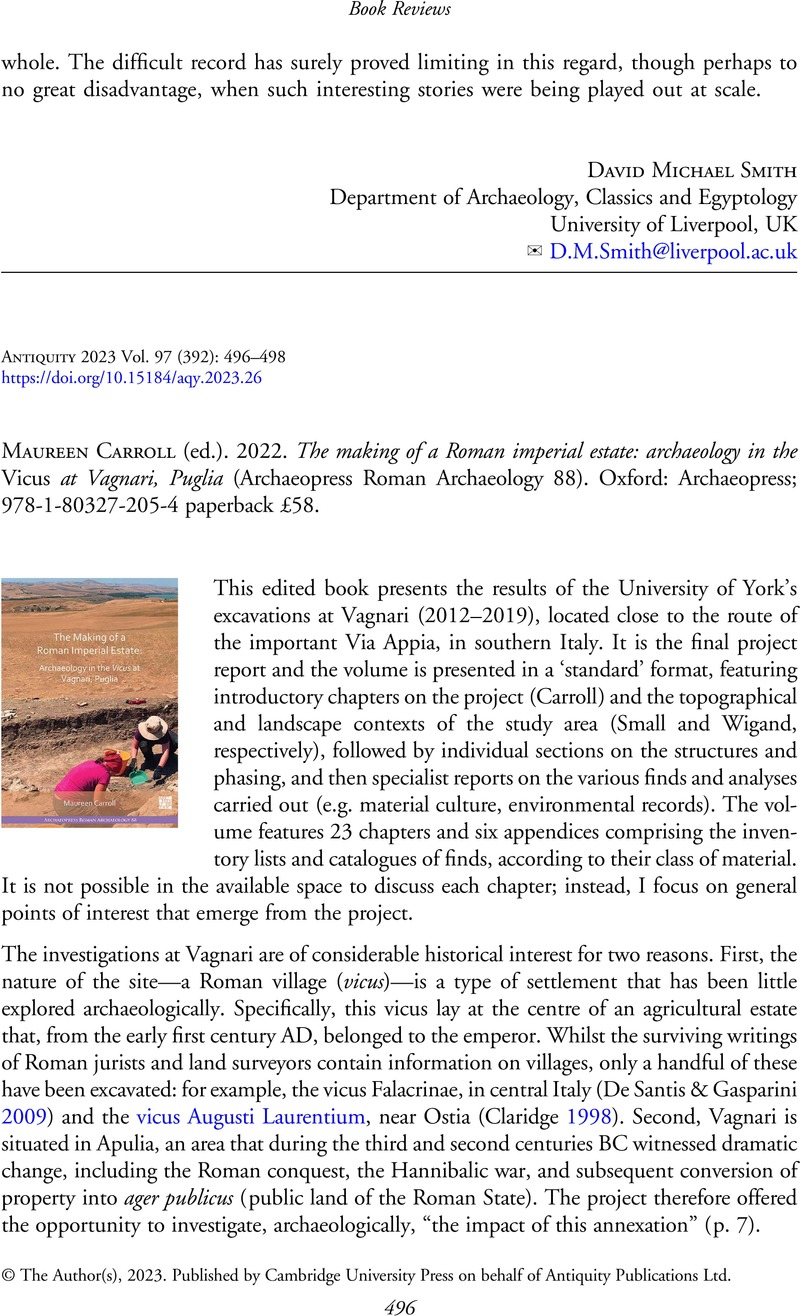No CrossRef data available.
Article contents
Maureen Carroll (ed.). 2022. The making of a Roman imperial estate: archaeology in the Vicus at Vagnari, Puglia (Archaeopress Roman Archaeology 88). Oxford: Archaeopress; 978-1-80327-205-4 paperback £58.
Review products
Maureen Carroll (ed.). 2022. The making of a Roman imperial estate: archaeology in the Vicus at Vagnari, Puglia (Archaeopress Roman Archaeology 88). Oxford: Archaeopress; 978-1-80327-205-4 paperback £58.
Published online by Cambridge University Press: 27 February 2023
Abstract
An abstract is not available for this content so a preview has been provided. Please use the Get access link above for information on how to access this content.

- Type
- Book Reviews
- Information
- Copyright
- Copyright © The Author(s), 2023. Published by Cambridge University Press on behalf of Antiquity Publications Ltd
References
Claridge, A. 1998. Il vicus di epoca imperiale. Campagne di ricerche 1987–1991, in Lauro, M.G. (ed.) Castelporziano III: campagne di scavo e restauro 1987–1991: 115–36. Rome: Viella.Google Scholar
De Santis, A. & Gasparini, V.. 2009. Vezzano: il vicus Falacrinae, in Cascino, R. & Gasparini, V. (ed.) Falacrinae: le origini di Vespasiano: 45–53. Rome: Quasar.Google Scholar
Emery, M.V. et al. 2018. Mapping the origins of imperial Roman workers (1st–4th century CE) at Vagnari, southern Italy, using 87Sr/86Sr and δ18O variability. American Journal of Biological Anthropology 166: 837–50. https://doi.org/10.1002/ajpa.23473CrossRefGoogle Scholar


